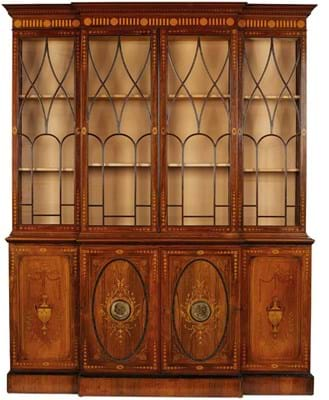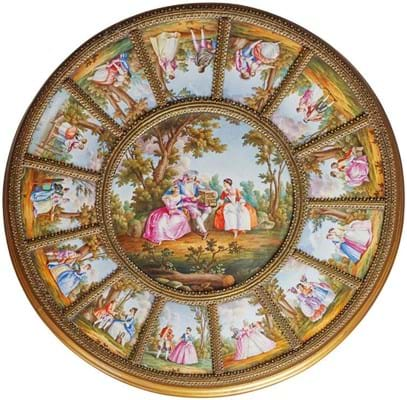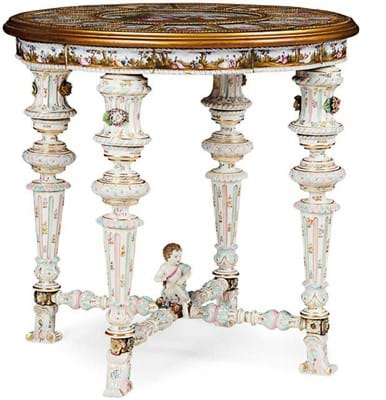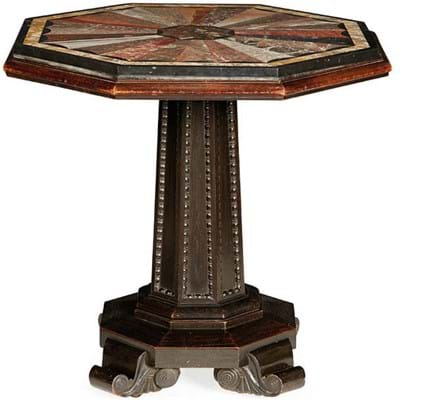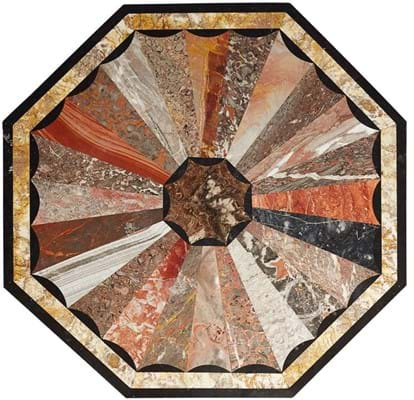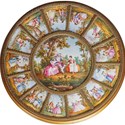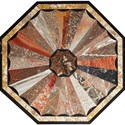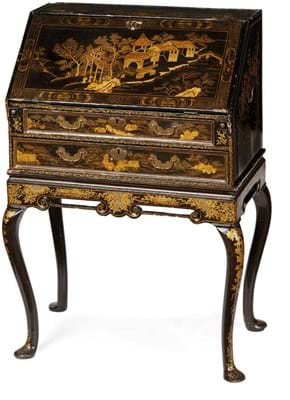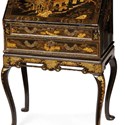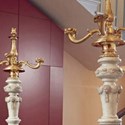It would not be a stretch to say the success of this January 31 Edinburgh sale was built on furniture – a more common observation these days than in the recent past – which comprised 40% of the 675 lots.
But there were other eye-catchers to add to the variety and the sale total of £591,500.
One lot which stood out was a 2ft 2in (65cm) high white marble bust of a young man with long tousled hair signed JN Steell. Sculpt./1853.
Estimated at £1500-2500, it sold to a determined private buyer at £13,000.
Sir John Robert Steell was the eminent Edinburgh sculptor of his day and statues by him adorn the city’s streets, including that of Sir Walter Scott at the monument to the writer in Princes Street Gardens.
However, his work is not always commercial and a second bust of a Victorian worthy fell short of modest expectations at £1200. It was inscribed Bust of William Small sq., Dundee. Sculptured and presented by John Steell R.S.A. as an expression of the great regards and esteem he retains for its subject and dated March 31, 1864.
This was in contrast to the performance of the far more appealing model of a young buck. “The better bust was a much more attractive subject, a vivacious young man,” said auctioneer Douglas Girton.
“Steell was known for his expertise in sculpting hair and the subject’s curls showed this off.
“For a collector, it ticked all the boxes. I thought it might go over estimate but not to the extent it did.”
This was only topped in price terms by a more imposing lot of Italian white marble – a pair of 19th century ormolu-embellished torchères. The 7ft 2in (2.17m) tall pair were previously in the National Galleries of Scotland. Estimated at £8000- 12,000, they sold at £14,000.
Potential star
The projected star of the sale, pitched at £13,000-18,000, was a late 19th century, Sheraton-style rosewood, satinwood, mahogany, ebonised and polychromed breakfront bookcase.
Measuring 6ft 2in wide x 7ft 8in high (1.87 x 2.33m), it was deemed ‘of exhibition quality’ and it did trigger a battle of sorts between a private bidder, a trader and the reserve.
The estimate proved too bullish but the bookcase got away at £12,000.
The modest resurgence of top-quality furniture has still some way to go but there were plenty of good four-figure bids for material that came fresh to market from Scottish country houses.
A set of 16 William IV dining chairs, carved to the backrails with lotus and other flowerheads, sold at £12,000, three times the mid-estimate, while a Georgian mahogany table with a 2ft 7in (79cm) diameter octagonal top inset with specimen marbles took £7000 against a modest estimate of £1500-2500.
Another centre table with a deluxe top, set with a series of early 20th century Dresden porcelain panels decorated with bucolic landscape vignettes, was a private buy at £7200.
A japanned bureau with plenty of age and decorative appeal was thought to be a Chinese export piece from 1720-30. With a fitted interior enclosed by a fall depicting figures and temples in a rocky landscape, it more than doubled the top estimate to sell at £6500.
Another Chinese piece with huge Western decorator appeal was an 18th-early 19th century floor screen. Standing 7ft 3in (2.21m) tall with four hand-painted paper panels of birds in an aviary, interest from China faded against strong Continental and UK bidding. It stayed in the UK, selling at £5500 against an estimate of £1000-1500.
Boer bushel measures up
From the same country house as the £12,000 bookcase came an imperial half-bushel measure from one of the briefly lived Boer republics.
The 21in (54cm) wide, twin-handled circular brass vessel was engraved Govt. of the Transvaal/1889 and drew considerable South African interest, selling to a bidder with interests in the country at £8000 against an £800-1200 estimate.
This was way more than one might expect to pay for a typical county measure, but readers may recall the huge sums bid for two similar imperial bushel measures at Strauss & Co of Cape Town in March last year. One used by the government of the Cape of Good Hope sold for R1.65m ((£103,125) while a similar measure used in Transvaal took R920,000 (£57,500).
Online bidding from Eastern Europe and Russia propelled the bidding on an early 19th century cloisonné enamel monstrance to £4000 while two 19th century Persian ghalian cups tripled the mid-estimate at £3000.
Ghalian cups – decorative gem-set drinking vessels, perhaps from the Arabic girl’s name meaning ‘precious’ – were widely produced during the Qajar dynasty. These examples were set with foil-backed rubies and turquoise.


